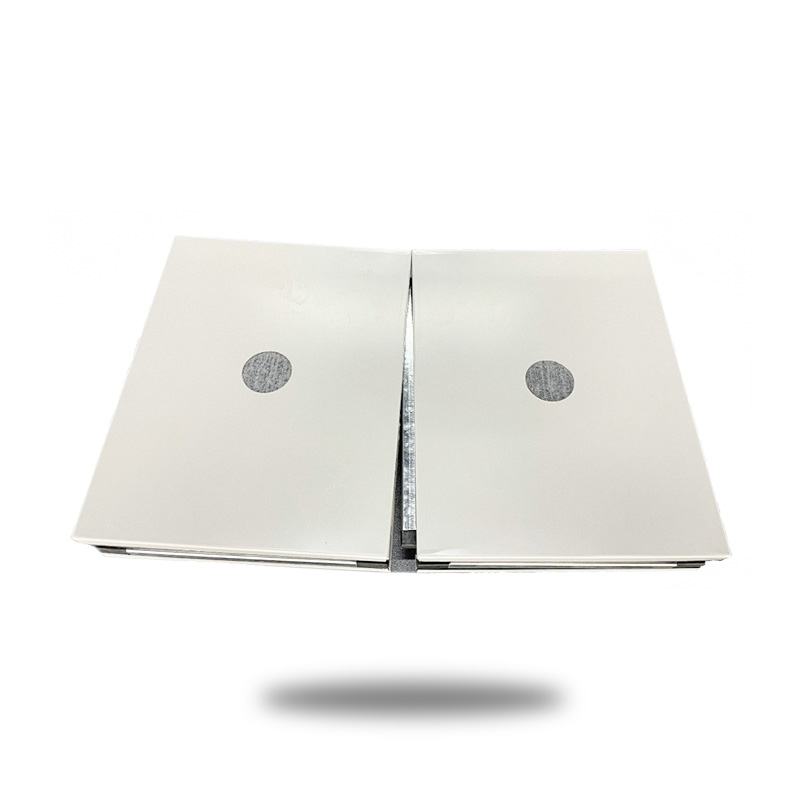

The design of cleanroom doors plays a crucial role in m […]
The design of cleanroom doors plays a crucial role in maintaining the required cleanroom classification and air pressure differentials by ensuring proper sealing, minimizing air leakage, and facilitating controlled airflow. Here’s how different aspects of cleanroom door design contribute to these factors:
1. Sealing Mechanisms
Gasket Seals: Cleanroom doors are equipped with gasket seals made from materials such as silicone or EPDM (ethylene propylene diene monomer) rubber. These seals are designed to create a tight closure around the door frame.
Contribution: Gasket seals prevent air leakage and minimize the infiltration of particles from adjacent areas into the cleanroom. This is critical for maintaining the cleanliness level required by the cleanroom classification.

2. Smooth and Non-Porous Surfaces
Material Selection: Doors made from materials like stainless steel, smooth laminates, or non-shedding plastics contribute to maintaining cleanliness.
Contribution: Smooth surfaces are easier to clean and disinfect, reducing the potential for particle generation. Non-porous materials prevent the accumulation of contaminants on the door surface.
3. Air Tightness
Design Considerations: The design of cleanroom doors ensures a proper fit within the door frame and mechanisms for closing securely.
Contribution: When closed, the door maintains airtightness, preventing air from escaping or entering the cleanroom except through designated air handling systems. This helps maintain the specified air pressure differentials required for controlling airflow and contamination.
4. Compatibility with Cleanroom HVAC Systems
Integration: Cleanroom doors are designed to integrate seamlessly with HVAC (Heating, Ventilation, and Air Conditioning) systems that maintain the cleanroom environment.
Contribution: Proper integration ensures that the door does not disrupt the airflow patterns established by the HVAC system. It allows for controlled air exchanges and maintains the desired positive or negative pressure differentials between cleanroom zones.
5. Operation Efficiency
Opening and Closing: The design of cleanroom doors (e.g., swinging, sliding) should facilitate smooth and controlled operation.
Contribution: Efficient operation minimizes the duration that the door is open, reducing the risk of contamination ingress or disruption to air pressure differentials.
6. Air Shower Systems
Airlock Design: For cleanrooms with air shower entry systems, the design of the door plays a critical role in ensuring effective operation of the air shower.
Contribution: Air shower doors are designed to maintain the integrity of the air shower process, ensuring thorough decontamination of personnel or equipment before entry into the cleanroom. This contributes to maintaining cleanliness and preventing contamination.
Importance for Cleanroom Classification
Class-specific Requirements: Cleanroom classifications (e.g., ISO 5, ISO 7) specify stringent requirements for air cleanliness, particle counts, and air pressure differentials.
Door Compliance: Cleanroom doors must comply with these standards to ensure that the cleanroom environment meets regulatory requirements for the specific classification.
Maintenance and Validation
Regular Inspections: Periodic inspections and maintenance of cleanroom doors are essential to ensure that seals remain effective, surfaces are clean, and operation is smooth.
Validation: Validation protocols may include testing air pressure differentials across the door and inspecting for leaks or defects that could compromise cleanroom performance.
The design of cleanroom doors directly impacts the ability to maintain cleanroom classification and air pressure differentials by providing effective sealing, minimizing air leakage, facilitating controlled airflow, and integrating smoothly with cleanroom HVAC systems. These factors collectively ensure that the cleanroom environment remains compliant with regulatory standards and suitable for its intended use.
Our new models offer superb design;competitive prices and their new features give them distinct advantages over similar products from other manufacturers.